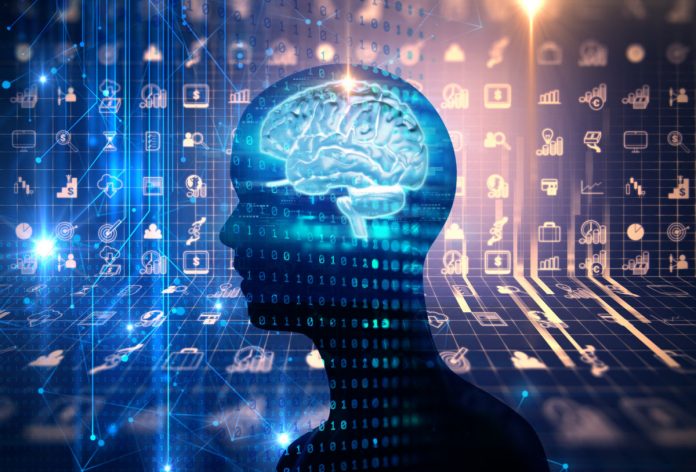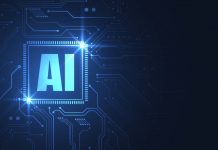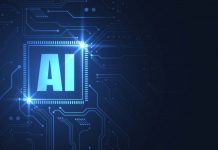This article has been written by Mudit Gupta, currently pursuing BBA.LL.B (hons.) from the University of Mumbai Law Academy. This article discusses information about Artificial Intelligence and how it can bring changes in the legal industry.
It has been published by Rachit Garg.
Table of Contents
Introduction
In today’s day and age, we are having very active artificial intelligence softwares in our pockets. They are right there in the devices which we use very frequently, like our mobile phones, tablets and laptops. These softwares know about our preferences and needs, especially regarding the content we consume on a daily basis. According to a report by Mckinsey Global Institute, Artificial Intelligence (AI) is going to create $13 trillion value in various industries. This clearly indicates that every part of life will have some tasks which will be automated by artificial intelligence.
One such part will surely be the legal industry.
All people, at least once in their lives, have to interact with the legal system. They might have to either register some intellectual property they created, their own company, or their marriage or might even have to fight a legal suit. Simply put, most individuals, in some or the other case, will have to interact with the legal system.
Talking about the pain points in the legal industry, especially in India, it is that all the matters, as well as procedures in the legal industries, are very time-consuming. The reason behind the same is that mostly all the tasks that are to be done by legal professionals such as legal research, drafting and vetting of contracts, due diligence, etc., take up a lot of time. At times, some of these tasks become quite monotonous in nature, which is why several independent practitioners, as well as small and big law firms, hire numerous junior-level lawyers. The main tasks which are done by these lawyers include legal research, drafting the first level of contracts, etc. The seniors, most of the time, delegate these tasks to the junior-level lawyers and they themselves handle the tasks like providing consultation to the clients, negotiating contracts on behalf of their clients, representing their clients in courts and reviewing and vetting the legal documents drafted by the junior-level lawyers.
As Artificial Intelligence is a very promising prospect for all industries, its application in the legal industry can create a major impact on the lives of people.
In this article, we will try to understand how Artificial Intelligence, machine learning, deep learning and data science work and which are the tasks in the legal industry that can be done effectively by these technologies, improving the lives of the lawyers as well as their clients.
Understanding the technologies
Artificial Narrow Intelligence and Artificial General Intelligence
To determine which tasks can be replaced by technology, the first step is to understand how these technologies work and what their basic operating principles are. So let’s first, one by one, understand how these technologies work.
When it comes to artificial intelligence, it is a technology that allows computers or machines to think and make decisions. At their very core, computers are still dependent on humans, and they need a very large amount of data to create a pattern and then perform the tasks based on the information that is fed to them in the form of data previously. The most common misconception that people have about Artificial Intelligence is that it can automate all the tasks, but the reality is a bit different. There are two types of Artificial Intelligence, namely:
- Artificial Narrow Intelligence, and
- Artificial General Intelligence.
The first one is a much more feasible technology as of now because, as per the growth of technology we have achieved, we can only train a machine to do a particular task using Artificial Intelligence such as speech recognition, language translation, etc. To achieve Artificial General Intelligence, we would have to train the machine to think in a similar way humans are able to do and do all the tasks, and that is not possible as of now because we have not yet found a way to figure out the working of a human mind.
Machine learning
Now, let’s understand what machine learning is. Machine learning is a method of achieving AI. It is a way of teaching computers to learn from data without being explicitly programmed. In machine learning, algorithms are used to identify patterns in data and make predictions or decisions without being explicitly programmed to perform the task. It is important to understand that achieving 100% accuracy from a machine learning algorithm is not realistic. If an algorithm is able to achieve near 95% accuracy, then that machine learning algorithm is good enough to deploy. But this much accuracy should be achieved on a significant amount of testing data. This technology basically works on the concept of A to B mapping in which the machine is first fed with the data of both the inputs and the outputs, and at the testing stage it is asked to complete the task by inputting A for which it gives the outputs, which are B. For example, if a machine learning algorithm is fed data on which emails are spam and which are not, we must first provide input of both types of emails and tell it which is the spam mail and which is not, and then at the testing stage, we will enter a mail and the machine will output if it is a spam mail or not based on the data that was given to the algorithm.
Deep learning
Now that we have understood what artificial intelligence and machine learning are let’s understand what deep learning is. It is a type of technology that is used in machine learning. It is a technology for building and training large neural networks, which enables the machine to accomplish the task for which such a network is built. This technology was built with inspiration from how the human brain works, but their working processes are completely unrelated.
Data science
Now let’s briefly understand what data science is. Data science is a field that uses scientific methods, processes, algorithms, and systems to extract knowledge and insights from structured and unstructured data. It involves the collection, cleaning, analysis, and interpretation of data, as well as the use of various techniques such as statistical modelling, machine learning, and visualisation to extract meaningful insights. This, in turn, helps in making informed decisions.
Legal tasks which can be automated
Now that we have understood how these technologies work at their root level and what kind of tasks we can automate in order to decrease the time consumed, which in turn can improve the situation of humankind, let’s try to understand which are the tasks in the legal industry that can be replaced by these technologies.
Legal research
In the legal profession, precedents are of utmost importance. In law offices, lawyers and interns are busy researching precedents where similar issues were discussed in superior courts. The decisions given and the interpretations of the senior-level judiciary can help them prove their point in a much easier and more effective way. This can save a lot of time, and the problem of delayed delivery of justice can be solved in much less time.
The legal research is basically done by providing keywords to the software and then analysing the various search results it provides to reach a similar conclusion. This task in the legal industry can be automated, saving a lot of time and energy, which in turn can help humankind.
To solve this problem, we will have to make the computer learn from the data from the “Keywords” and the desired results, and then at the trials, we will have to input the problem, and it will give us the results based on the previously fed data.
Although these results are fairly accurate, they cannot be completely relied upon, and as law is a profession of trust and conviction, these results will have to be reviewed to some extent.
Reviewing contracts
In today’s world, where there is a boom of entrepreneurship and people are eager to start new companies that provide very feasible solutions to real-world problems, the founders most of the time struggle to handle the legal side of their operations, in which they have to contract with many other stakeholders on a regular basis through written contracts. In real life, the complete life cycle of signing a contract can sometimes become very tedious as it requires a lot of negotiation and vetting of the legal documents. This time duration of a contract life cycle can be reduced, which can make this whole procedure very much streamlined and can save a lot of time for lawyers so that they can help more and more clients in a short amount of time.
The main thing that can be done to automate this part of the legal industry is to create AI systems that can automatically absorb proposed contracts, examine them properly by adopting natural language processing (NLP) technology, and decide which aspects of the contract are fine and which parts may pose a problem.
Due diligence
The main task when a corporate transaction takes place is to work on due diligence. In this task, law offices work on behalf of their clients to check the past history and the paper trail of the other party they are dealing with. It involves checking for certain things, such as any past litigation, and if they are found, they have to be discussed, and then any further decision is made to take the deal forward.
This task can be very well managed with the use of technology by automating it and standardising what needs to be checked and where it needs to be checked.
Contract analytics
One study estimates that poor processes for contract management cost businesses 9% of their annual revenue. This clearly indicates that the lack of an effective mechanism for contract analysis is a big enough problem that it is causing hindrances to businesses in scaling their operations. These issues can be very effectively solved by the introduction of Artificial Intelligence.
AI software can significantly reduce the amount of human power required to update and edit contracts to reflect the specific agreement between two parties, which, in turn, will also lead to effective time management. Every issue regarding the updation and novation of an agreement can be very well solved using machine learning and language analytics by using the A-to-B mapping systems.
Litigation prediction
Most of the time, when the lawyers are interacting with the clients regarding a litigation suit, one of the prominent questions the clients have is regarding the chances of winning the case. Lawyers make predictions about the outcome of litigation based on their experience and understanding of human psychology. Sometimes people just file a suit for the sake of it. These suits can be reduced if we have a mechanism that can predict the outcome using the judgments given in similar cases previously. This can significantly reduce the number of cases filed and, hence, reduce the burden on the judiciary.
Assisting in registration of intellectual properties
Nowadays, people are innovating new things and starting new ventures. To secure their innovation and to create an innovative business, it is very important for the inventors and founders to secure their innovation by way of patents, trademarks, and copyrights. This task mostly requires a lot of past checking and a lot of paper trail. This system can be very efficiently automated, and a lot of human energy and time can be saved by feeding the machine the data about all the granted intellectual property and, on that basis, letting the machine decide whether it can be granted or not.
AI chatbots
Sometimes, lawyers are too busy representing their clients in court and don’t have much time to sit with their clients and solve every single issue. This problem of their clients can be solved by the AI chatbot, which can be an integration of 2-3 projects such as litigation prediction, assisting in the registration of intellectual properties discussed earlier in this article, and on the basis of that, the system can generate customised answers for some specific questions that are common for most of the clients and help them get answers for the questions, which can help them calm their nerves because sometimes they can be quite nervous while handling legal suits.
Current projects working on automating legal industry
Now that we have learned about the working and application of Artificial Intelligence and other technologies and how they can automate tasks in the legal industry let’s take a look at some of the projects that are solving these problems with the help of these technologies.
Smith.AI
This is a startup that has tried to assist law offices by providing them with a “virtual receptionist” with the help of an AI chatbot that helps in logging and transferring the calls that a law office receives on a daily basis. It is an outsourcing service that provides services to lawyers in their region.
Casetext
This software works towards providing automated legal research to lawyers in just one click. This allows them to spend more time preparing their arguments, counselling their clients, and performing other tasks that only human intelligence can perform.
Diligen
This software assists law offices in doing due diligence by automating the process to some extent. This software employs machine learning technology to examine contracts for specific clauses, provisions, or changes, as well as to generate a quick and convenient summary of the clauses in the documents.
Conclusion
Artificial Intelligence is a reality today. It cannot replace human beings but can assist them in various tasks that they do on a daily basis. All tasks in which decision-making depends upon some kind of pattern recognition and which are quantifiable in any manner, meaning Artificial Intelligence can replace some of the tasks which are dependent on the Intelligent Quotient (IQ), but today’s standards of technology cannot replace the tasks which require Emotional Quotient (EQ). The reason behind this is very simply explained by a quote by Yuval Nova Harari:-
“Humans think in stories rather than in facts, numbers, or equations, and the simpler the story, the better.”
This uniqueness in our thought patterns cannot be accommodated by current technology, and law as a profession deals with people’s emotions as well as their psychology. This means that most tasks cannot be replaced by current technology, but current technology can help us develop some tools that can help us deliver value to our clients and create more time value for ourselves and our clients.
References
- https://www.forbes.com/sites/robtoews/2019/12/19/ai-will-transform-the-field-of-law/?sh=56045c8d7f01
- https://legal.thomsonreuters.com/en/insights/articles/ai-and-its-impact-on-legal-technology
- https://businesslawtoday.org/2022/02/how-ai-is-reshaping-legal-profession/
- https://www.barandbench.com/columns/artificial-intelligence-and-legal-profession-an-intelligent-way-ahead
- https://jolt.law.harvard.edu/digest/a-primer-on-using-artificial-intelligence-in-the-legal-profession
Students of Lawsikho courses regularly produce writing assignments and work on practical exercises as a part of their coursework and develop themselves in real-life practical skills.
LawSikho has created a telegram group for exchanging legal knowledge, referrals, and various opportunities. You can click on this link and join:
Follow us on Instagram and subscribe to our YouTube channel for more amazing legal content.
 Serato DJ Crack 2025Serato DJ PRO Crack
Serato DJ Crack 2025Serato DJ PRO Crack











 Allow notifications
Allow notifications



